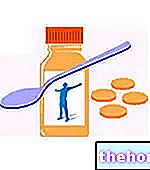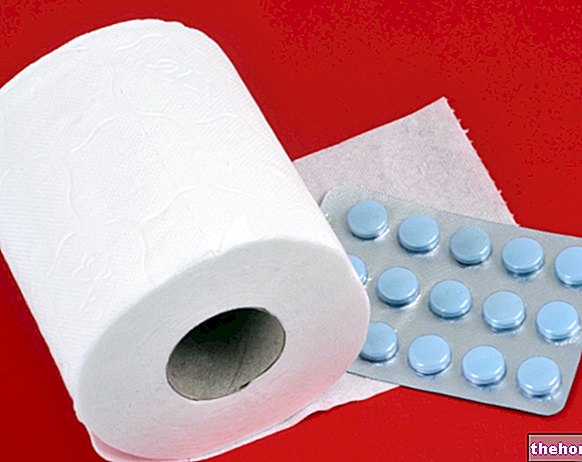WATER AND APPARENT DISTRIBUTION VOLUME
The water of our organism is divided into three compartments. Each compartment has its own percentage of water and more precisely 4% for the plasma compartment, 13% for the intracellular one and finally 41% for the extracellular one. The previously mentioned values , are volumes calculated through the use of different substances, which allowed us to determine a precise volume value for each compartment taken into consideration.
- H2O PLASMATICA ≈ 3 L (calculated with Evans Blue (high PM and lipophilic molecule)).
- EXTRACELLULAR H2O ≈ 11 L (calculated with inulin).
- INTRACELLULAR H2O ≈ 28 L (calculated with deuterated water (D2O) or urea).
The total volume of body water is 42 LITERS, represented by the sum of all three volumes of the aqueous compartments of the organism.
To determine these volumes, an experimental determination had to be performed consisting of an intravenous injection of a known quantity of a substance (inulin, Evans blue, urea or D2O). After this first step, a blood sample is taken and the volume and plasma concentration of the injected substances are calculated.
.jpg)
From the ratio between the administered dose and the plasma concentration measured after a certain time, the APPARENT VOLUME OF DISTRIBUTION is obtained. The apparent volume of distribution (Vd) of a drug is the theoretical volume of body water required to contain the quantity of a drug present in the organism, assuming that its concentration is uniform everywhere and equal to the plasma concentration.
Dose (mg) (amount of drug present in the body)
Vd (l) =
_2.jpg)
_3.jpg)
_4.jpg)
_5.jpg)
[conc.] (mg / l) (drug concentration in plasma)
Also in this case the distribution can be influenced by various phenomena such as binding with plasma proteins, accumulation in the tissues, metabolization and elimination. From the mathematical calculation of the Vd it is possible to understand whether the drug is distributed in a homogeneous or inhomogeneous way. If the distribution is homogeneous it is possible to determine a very precise position of the drug, therefore the numerical value found will be a number equal to or included in the values of the three compartments (3, 11 and 28). If the Vd is close to 3, the drug remains in the blood, if the number is close to 11 the drug remains in the blood and in the extracellular fluid and finally if the number is close to 28 the drug is in the blood, in the extracellular and intracellular fluid . If the distribution is inhomogeneous the value of Vd is clearly higher than 42 liters, therefore the drug has gone from the blood, it has not been eliminated, but deposited in some area inside the organism.
Vd calculated
(liters)
Medicines
Tissue compartment in which the drug is distributed
5
Heparin, warfarin, furosemide
Plasma fluid, vascular system
10-20
Aspirin, ampicillin, gentamicin
Extracellular fluid (plasma water and interstitial fluid)
20-40
Prednisolone, amoxicillin
Total body water (extra and intracellular fluids)
70
Propranolol, imipramine,
Accumulation and tissue binding
Plasma compartment: There are concentrated drugs with high molecular weight or which bind to plasma proteins and cannot pass through endothelial discontinuities.
Extracellular liquid: There are concentrated drugs with low molecular weight and hydrophils that cannot pass cell membranes.
Total body water: Hydrophobic low molecular weight drugs are concentrated there.
Factors affecting drug distribution are:
- Physico-chemical characteristics of the substance;
- Capillary permeability;
- Radius of relevance (distance between one capillary and the other);
- Perfusion rate.
The capillary permeability varies according to the area of the organism. The least permeable are those of the brain and the blood brain barrier, and then the more permeable ones which are those of the liver, spleen and kidney.
_6.jpg)
The smaller the radius of relevance and the more capillaries there are, therefore the greater the spraying of the tissue.
The perfusion rate is higher in the kidney and slower in the adipose tissue. Since there is a lack of circulation in the adipose tissue, the latter acts as a deposit for the drug. The medicine is deposited in the adipose tissue for two reasons. The first reason concerns the vascularization of the tissue, the second reason is the marked liposolubility of the It should also be mentioned that the fat-soluble substance undergoes two types of distribution within our organism. The first distribution follows the haemodynamic rules, with an achievement of the target organ while the second is defined redistribution of the drug. The redistribution of the drug depends mainly on the characteristics of fat solubility, but it is also a main cause that causes an uneven distribution of the drug causing it to accumulate in the adipose tissue.
Let's summarize the concepts expressed previously.
To have a homogeneous distribution, a drug must have:
- Weak bond with plasma proteins;
- Low PM;
- Having the right degree of hydrophilicity / lipophilicity;
- Have no affinity for tissues or cells that cause the deposit.
To have an uneven distribution, a drug must have certain characteristics such as:
- High PM;
- Water solubility;
- High fat solubility (accumulation in adipose tissue);
- Strong bond with plasma proteins (difficult distribution);
- Strong chemical affinities for certain sites of the organism (eg Lead with bones and trisofundin, a skin antifungal with affinity for the -SH groups of keratin);
- Affinity to particular barriers (BEE and placental barrier).
Other articles on "Distribution of a drug"
- Factors that modify the distribution of drugs
- Central nervous system barriers





.jpg)






















